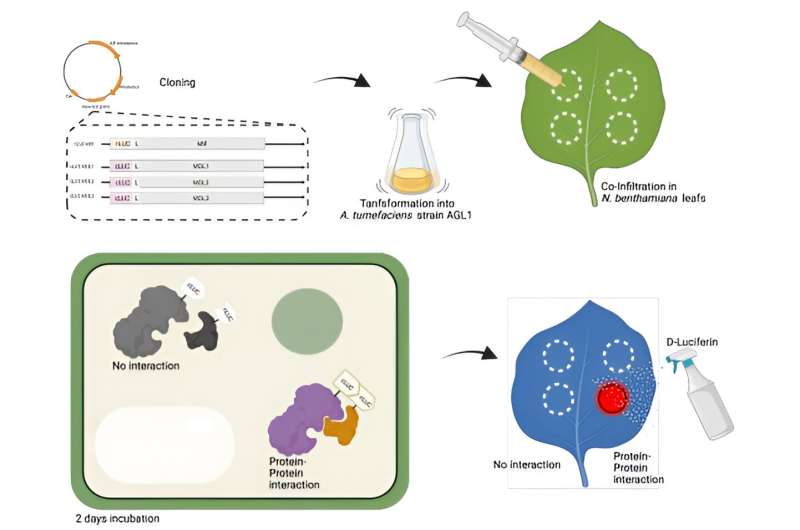This article has been reviewed according to Science X's editorial process and policies. Editors have highlighted the following attributes while ensuring the content's credibility:
fact-checked
peer-reviewed publication
trusted source
proofread
Certain plant proteins resemble human signaling proteins of the immune system and can bind to their receptors

The human immune system is based on cells that communicate with each other via signaling molecules known as cytokines and chemokines. One of these signaling molecules is the protein MIF (macrophage migration inhibitory factor). It plays an important role in the regulation of various immune reactions by binding to suitable receptors of various cell types in a ternary complex, thereby activating certain signaling pathways in these cells.
Surprisingly, there are plant proteins that are very similar to the human MIF protein in the sequence of their individual building blocks (amino acids) and these are referred to as MDL proteins.
A team led by Jürgen Bernhagen from the Institute for Stroke and Dementia Research (ISD) at University of Munich Hospital and Professor Ralph Panstruga from the Unit of Plant Molecular Cell Biology at RWTH Aachen University in collaboration with a research group led by Professor Elias Lolis from Yale University in the U.S., has now shown that MIF and MDL proteins are also astonishingly similar in their spatial structure.
Lead author Lukas Spiller and the team also found that the plant MDL proteins bind to the receptors of the MIF protein, alone or in complexes with the human MIF protein, and are thus able to activate immune-relevant signaling pathways—in some cases more efficiently than the human MIF protein alone.
This unexpected finding, which has now been published in the journal Science Signaling, suggests that plant MDL proteins may modulate the human immune system via this mechanism.
This scenario could play a role, for example, in immune reactions triggered by plant particles (such as hay fever or skin reactions), intolerances to plant foods, or the mechanisms of action of herbal medicines. However, further research is needed to establish whether this is actually the case.
More information: Lukas Spiller et al, Plant MDL proteins synergize with the cytokine MIF at CXCR2 and CXCR4 receptors in human cells, Science Signaling (2023). DOI: 10.1126/scisignal.adg2621
Journal information: Science Signaling
Provided by Ludwig Maximilian University of Munich




















